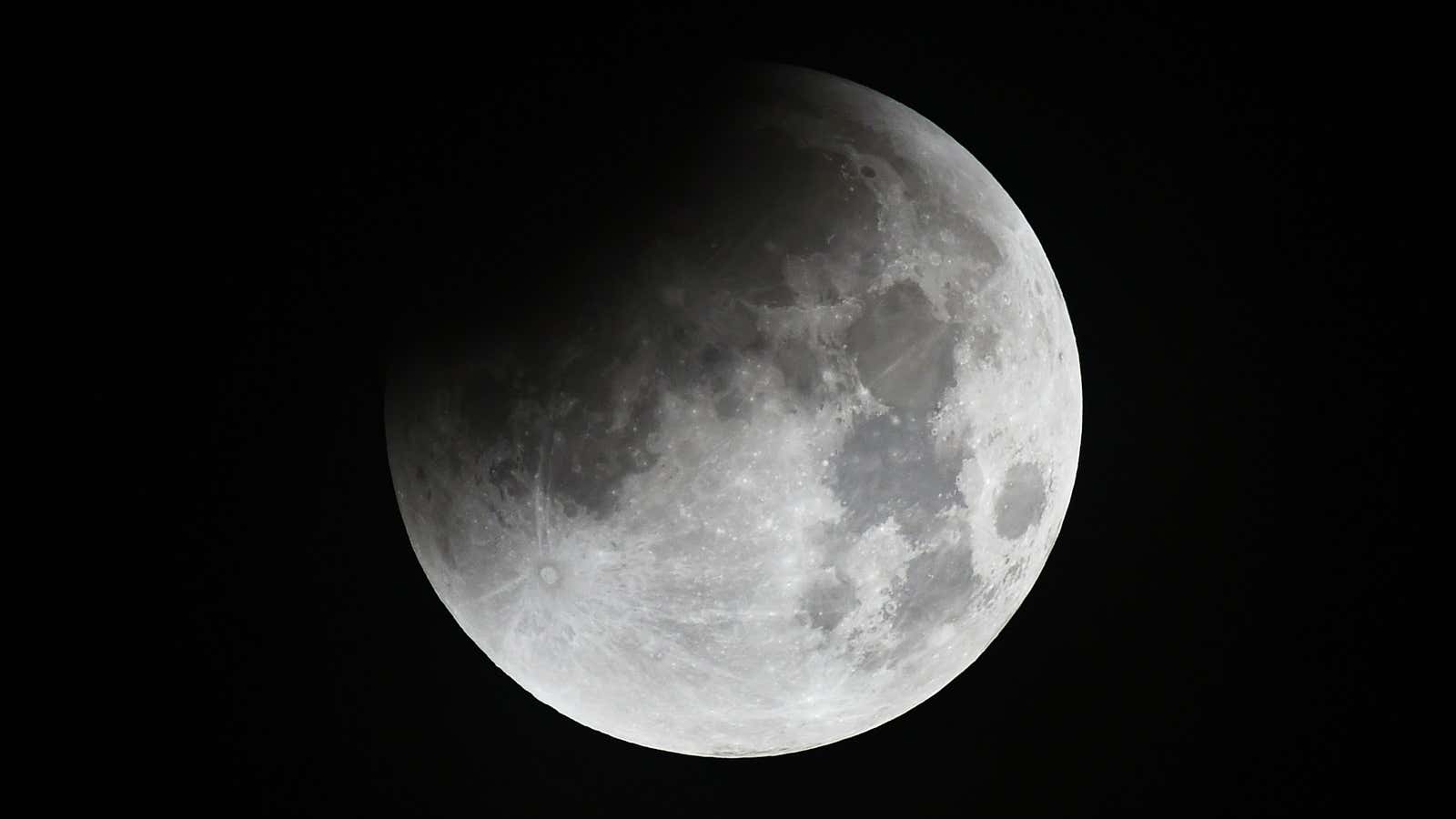The International Space Station, as amazing as it is, isn’t going to be around forever—or even for very long. Sometime in the 2020s, the program will come to an end. Europe has been thinking about where it will carry out space research after this date, and it’s aiming high. At the moon.
We’ve known for a while that Russia and Europe have been kicking around different ideas about a lunar base. But the director general of the European Space Agency, Jan Woerner, has been speaking to the press this month to elaborate on how his agency now sees the project. It sounds big.
The goal is not to merely build “some small houses over there,” according to Woerner, but it’s to build a serious installation that has “multiple uses and multiple users.” He’s also not concerned with an all-scientific status for the base, and suggested that while some users of the base may be interested in space exploration or performing science, others may be private enterprises that may mine the moon. Thanks to the low lunar gravity and the moon’s airlessness, this base could also be a staging point for missions deeper into the solar system, including those sending humans to Mars.
Woerner sees the Moon Village plan as the natural successor to the ISS, which is funded by Europe, the US, Russia, Canada and Japan. All members except Europe are committed to funding the ISS until 2024.
Any plan to build a large-scale base on the moon is going to require a similar international collaboration, largely thanks to the economics of hauling all of the necessary hardware into Earth orbit, propelling it to the moon, and landing it safely—along with robotic and human assistants—on the lunar soil.
Reaching the ISS in low Earth orbit already costs tens of millions of dollars per launch, and NASA recently confirmed supply contracts for the rest of the ISS’s life with commercial space providers SpaceX, Orbital, and Sierra Nevada to the tune of around $14 billion. For context, the only program that has landed humans on the moon so far, Apollo, is thought to have cost around $25 billion in 1975 dollars, which now tops $100 billion when adjusted for inflation.
China, which doesn’t participate in the ISS project, has meanwhile revealed its own plans to study the moon, and will launch a probe that will land on the almost entirely unexplored dark side in 2018. Interestingly, the ESA’s boss didn’t rule out cooperation with the Chinese when it comes to the moon village.
